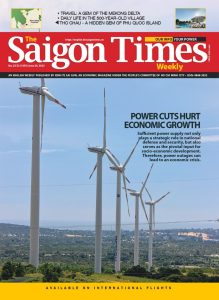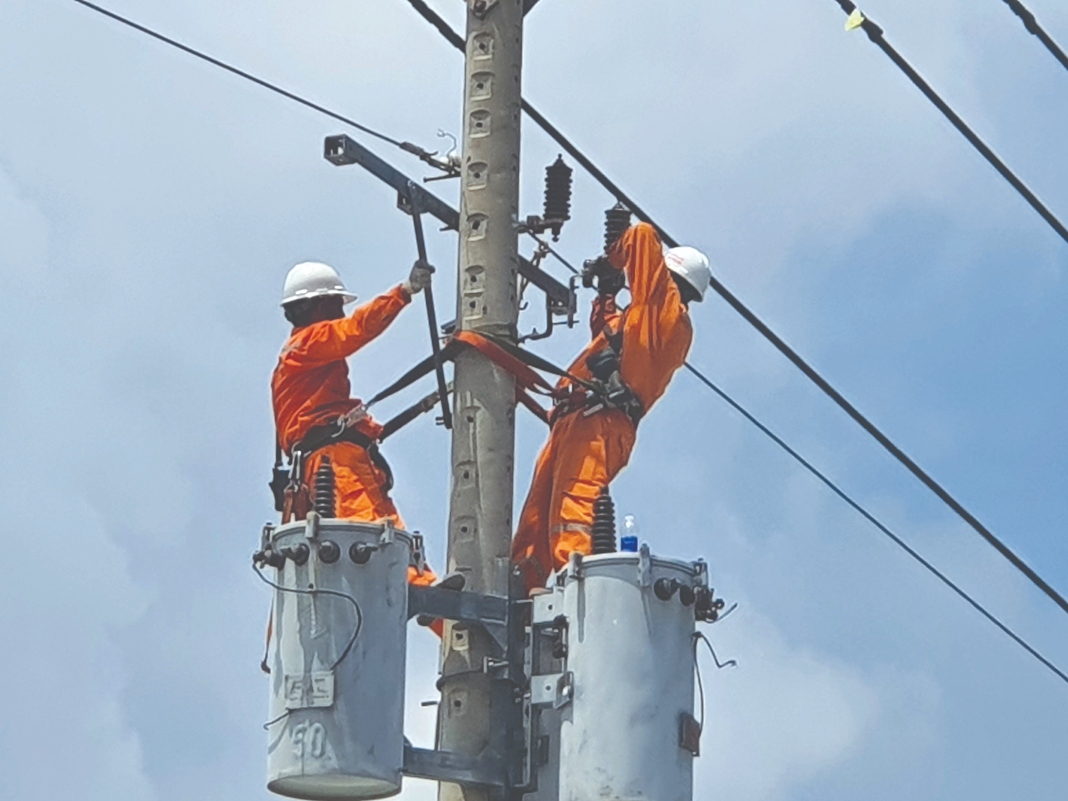Electricity shortage has struck northern Vietnam over the past few weeks. From a certain perspective, however, this is a good opportunity as it has exposed the limitations of the power sector and has prompted the Government to thoroughly assess relevant issues, such as the development of power sources, power projects and transmission networks, and improvement of the competitive power trading market.
At first glance, the power shortage in the North is due to… heaven and bad luck. Little rain and prolonged heat have left two consequences. The first is a sudden surge in power consumption. The second is a decline in output of hydropower, which accounts for 43.6% of the power supply for the northern part of the country. Water levels of most reservoirs have ebbed, making it impossible for hydropower plants to operate as normal.
Meanwhile, thermal power, the second largest source of power supply, is facing troubles, “complicating the issue,” as said by Deputy Minister of Industry and Trade Dang Hoang An. Besides generators which have been out of order for a long time before the power shortage, many “good” thermal power plants have also faced technical glitches due to operating at high capacity over a long time.
Nevertheless, the deeper reason lies in the development of power sources and transmission lines. Ha Dang Son, director of the Energy and Green Development Center, said no new power project had been developed in the North over the past several years.
Vietnam Electricity Group (EVN) currently accounts for 38.4% of the total power capacity, and other investors the rest. Over the past time, major power projects of EVN have faced delays due to many obstacles during the development process.
Specifically, the approval of the Power Master Plan VIII has been slow, so EVN has no adequate legal basis to execute the following steps of the two thermal power projects of Quang Trach I and Quang Trach II in Quang Binh Province. The Quang Trach I project, with a capacity of 1,200MW, has had trouble with site clearance which may slow down its progress.
Construction of the extended Hoa Binh Hydropower Plant started in January 2021 and progressed as scheduled until a landslide occurred at the area of its foundation. After “very long” consideration by the Ministry of Industry and Trade, construction resumed in September 2022, but the rainy season has made it hard to put the project into operation in the fourth quarter of 2023. Similarly, many power projects of other investors cannot be completed as scheduled in the Power Master Plan VIII due to various reasons.
In addition, experts in Vietnam and from the World Bank have pointed out that the slow development of the power market, with the electricity price not fully reflecting the market costs, is the main reason for the lackluster participation of investors, leading to loopholes in energy security.
Regarding power transmission, Vietnam has the largest 220KV and 500KV transmission networks in Southeast Asia and the second largest 110KV transmission network in the region after Thailand, all are owned by EVN. The North-South transmission network includes two 500KV lines with the first and second sections. The third section from the South to Vung Ang (Ha Tinh Province) is being developed, and the section for transmission to the North is not yet available. Therefore, even if 85 renewable energy projects, mainly in the central region and the South, have full legal documents and investors have completed power sale negotiations with EVN, their power cannot be transmitted to the North to alleviate the shortage.
Under the just approved Power Master Plan VIII, the third section of the 500KV line from Ha Tinh to the North will be developed to Hung Yen Province and connected with the network between now and 2030. In the current urgent situation, EVN has assigned the National Power Transmission Company to report to the Ministry of Planning and Investment on the immediate execution of this project. According to EVN leaders, if full efforts are made, some 1,000-1,500 MW can be put on the line and transmitted from the South to the North. However, they have forecast that it would face many difficulties and take time to complete the third section of the transmission network.
According to EVN calculation, to ensure enough power supply for achieving GDP growth of 6.5-7% as targeted by the resolution of the 13th Party Congress, the power demand is estimated to increase around 9% per year under the basic scenario. Under the economic recovery and strong growth scenario, the power demand would increase 11.5% in 2022 and 10.36% per year in 2023-2025. EVN figures show that the power demand in the North accounts for nearly 50% of the national demand and is projected to increase higher than the average level in the country. Currently, the power system in the North has an installed capacity of 29,500 MW, while the available power capacity, including imported electricity, is only 17,500-17,900 MW. Pervasive power blackouts have occurred when power consumption has exceeded 20,000 MW over the past few days.
 According to the information from a recent talk on dealing with power shortage, the North has the highest increase in electrical load in the country, at 9.3% per year in 2016-2020, equivalent to nearly 6,000 MW, but the power supply in this period was only 4,600 MW, increasing some 4.7% annually.
According to the information from a recent talk on dealing with power shortage, the North has the highest increase in electrical load in the country, at 9.3% per year in 2016-2020, equivalent to nearly 6,000 MW, but the power supply in this period was only 4,600 MW, increasing some 4.7% annually.
All the above data can help answer this question: Would the severe power shortage and constant power blackouts in the North continue in the upcoming time, or is it an intermittent, temporary phenomenon under extreme weather?
This question serves as a warning to the Government to ensure enough power for the economy and consumption. Encouraging power saving nationwide or inspecting EVN is necessary, but it is not a fundamental solution for the power shortage in the North. Before the start of the implementation of the Power Master Plan VIII, it needs comprehensive assessment of relevant issues, such as the development of power sources, especially the correct evaluation of the position and the role of renewable energy, execution of power sources and transmission projects, completion of the competitive power trading market, and especially the agency responsible for power shortage. If these issues are not tackled, the economy will suffer from a power shortage.









